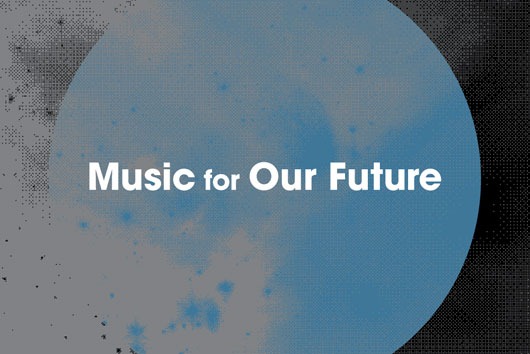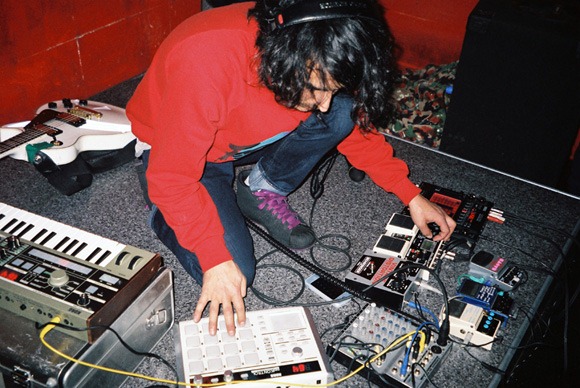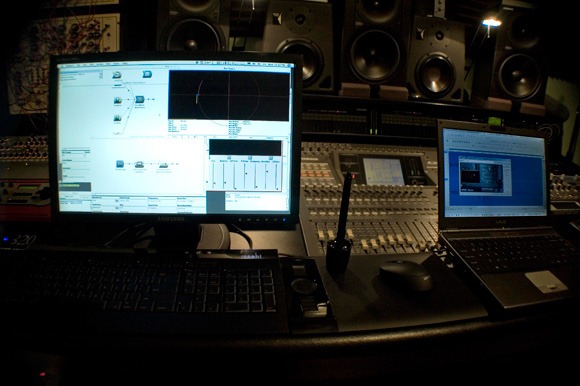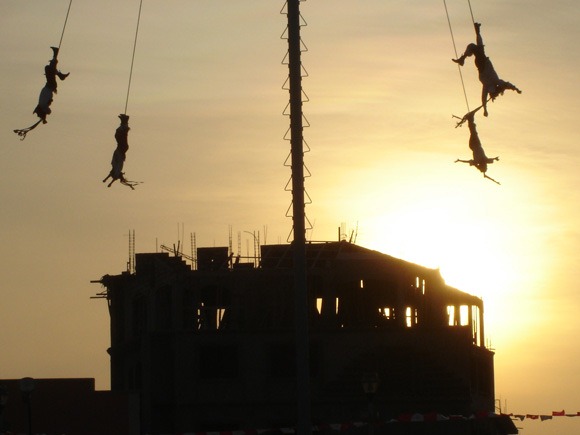Working with music production today is a bit like science fiction. It’s fitting that visions of technology’s promise, menace, and humanity would inspire electronic music.
Create Digital Music, XLR8R, and Pitchfork got to join together with TV network SyFy to curate a free, 13-track compilation of “Music for Our Future.” Inspired by the world of SyFy’s new TV series Caprica, which is set just before the recently-concluded Battlestar Galactica, this is science fiction as the familiar. It’s the near future, not simply fantasy.
Download the full compilation for free, exclusively at:
http://www.xlr8r.com/musicforourfuture
The lineup, curated by the three publications, includes the likes of Lusine, Willits & Sakamoto, The Field, and Richard Devine, to name a few regular favorites on this site, with exclusive or previously-unreleased tracks by White Rainbows, Nice Nice, and myself.
In addition to the music, several of those artists share with CDM their techniques and process.
The full tracks:
Lusine, “Gravity” – this cut comes from A Certain Distance, a CDM favorite album in 2009. Lusine aka Jeff McIlwain is on Ghostly Internationaland, whether it’s “abstract” electronica or downright electronic songwriting, always manages to put a unique sonic stamp on his work.
Atlas Sound, “Walkabout (with Noah Lennox)” is by Bradford James Cox of Deerhunter fame, from his album Logos.
Hudson Mohawke, “Fuse” – the Glasgow-based artist just debuted on Warp with Butter, including this track.
White Rainbow, “Raw Shanks a Million” comes from Kranky artist Adam Fornker of Oregon. It was my introduction to his work, but see more on this track below. I love its spare, pulsing beats; it sounds like what I’d listen to while jogging to Caprica City’s cybernetics research institute.
King Midas, Sound “Outta Space (Slow Version)” comes from a project started by London’s Kevin Martin, the man behind The Bug. It’s a future-dub track for people who believe space is the place.
Low Limit, “Turf Day” is by San Francisco producer Bryan Rutledge, whom I knew as half of Lazer Sword, and who seems to be right at the center of the good stuff happening in electronic music in California.
Willits & Sakamoto, “Toward Water” comes from 2008’s “Ocean Fire,” the collaboration between experimental guitarist and composer Christopher WIllits and master composer-musician Ryuichi Sakamoto. If you don’t know that full album already, it’s well worth owning.
The Field, “I Have The Moon, You Have The Internet (Gold Panda Remix) revisits the track off The Field’s latest, “Yesterday and Today” – another top pick for 2009, and nicely reimagined here. You can check out Gold Panda, too; his mixes have become big Internet hits, and I love the quality of his work.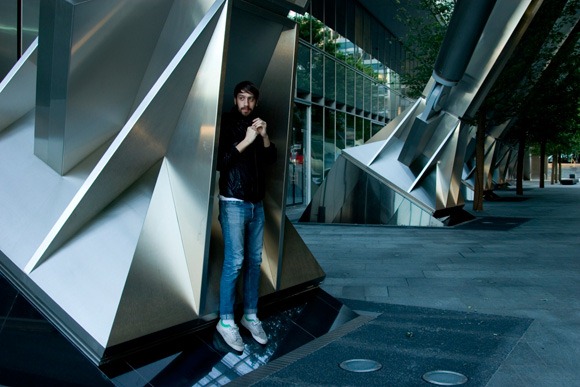
Tyondai Braxton, “Uffe’s Woodshop” is off his solo album Central Market and premiered on Pitchfork. The Battles singer is a Warp artist, composer, looper, and yes, indeed the son of Anthony Braxton. It’s an explosion of acoustic sounds amidst the other works here.
Untold, “Luna” is by London’s up-and-coming Jack Dunning, familiar on dance floors both for his original productions and remixes.
Nice Nice, “See Waves” will be a 7” from Warp Records in February, but you get to hear it here first. I love that it brings an entirely different rhythmic feel to this group.
Richard Devine, “Matvec Interior (Feat. Otto Von Schirach)” really is science fiction, an intricate set of colliding sonic forms from the composer and mad-scientist sound designer. It’s a favorite from his 2005 Cautella, but Richard revisits his sonic process for CDM here today.
Peter Kirn, “Anaxagoras” is my own track, premiering here, named for the Greek philosopher who attempted to explain astrological events through science, and fled after being called a heretic. The music, with some sounds of viola da gamba and others synthesized (or resynthesized), fall on that boundary between re-processed past and imminent future.
Now, some notes from behind the scenes:
White Rainbow
CDM: Tell us about the inspiration for this track. What was the process like?
I don’t get inspired to make something in the sense of looking at a butterfly and then writing a song. For me, it’s more like the act of making inspires where things go. The sounds as they come out inspire me to react and create on top of them.
This track was made by recording about an hour of live improv and then editing and cutting down and doing a few overdubs. My set up is:
INPUTS:
mic, computer running ableton using drum racks to trigger samples with a padkontrol, various iphone/ipod touch drum apps (beat maker, idrum etc), synth, electric guitarMIXED/OUTPUT:
delay, multi –fx, dd-20 giga delay as looper, kaoss pad kp3 as multi-fx and looper
…and this all getting recorded into ableton on another computer in the studio.
I let that sit for a few months, then came back to it, cut things down and added vocal (with the Ableton Looper…one of the only times I’ve used that) and weird synth pad overdubs.
I’ve been making looper based music for a really long time now (going back to the original boomerang pre turn of the century). It’s really tough to keep it interesting… so I’m always looking and searching for new ways to keep myself interested and inspired to make new music in new ways.
I also play in an improvised electronic group called Rob Walmart, wherein we get very wrong and stupid and on tons of crappy gear. Tons of Casio keyboards, MicroKORGs, iPod Touches, Nintendo DS, microphones, etc.A new 3xLP of Rob Walmart will come out on Marriage Records early this year.
People probably still brand me as a new age or psychedelic ambient guy, and that’s cool but to me there is a direct line between synth future funk from the 70s and 80s and say, tangerine dream or Klaus Schultze. Just technology inspiring different people to make wild, "out there" space sounds. I would like to continue along that line.
Richard Devine
CDM: What can you tell us about this track?
I originally produced it in 2005, in collaboration with my good friend Otto Von Schirach. I was a going for something very alien, futuristic, scifi, scientific and unusual for this piece. The sonic timbres and textures are a combination of hybrid computer synthesis and field recordings. Think Aliens vs. Predator happening inside the world of HR Gigers head=) The track initially started out in Logic Audio, I began cutting up sections and pieces of various field recorded bits. I went to many locations to get some of the sound sources. Many of them quite unusual and disturbing.
CDM: Your work always has these extraordinary layers of sound. What was the production process like on this track?
I started out on this farm near my house here in Georgia. It was during fall, and we went to this Halloween festival pumpkin patch place with my girlfriend. It was a huge field that had a petting zoo, and various other farm animals. I was intrigued by this fairly large turkey they had in a small metal wired cage. I record several takes of him frantically moving around as I got closer with my microphone. I also recorded the sounds of pigs, breathing heavy into the microphones.
I had a pair of DPA 4060’s Miniature Body Microphones clipped and tucked into my shirt sleeves to capture the animals up in close proximity. I also recorded sounds of water, sand, rocks, trees, leaves and debris in my backyard. I used a lot of these sounds and then imported them into the computer for heavy processing and manipulation. One of the main processing engines was the Kyma system by Symbolic Sound. I took a few sounds and converted them into spectral analysis files in which I morphed and re-synthesized some of the acoustic sounds into synthetic grains, or partials. Creating these very alien artificial sounding sounds to the mix. I also did a bit of FM synthesis for some of the percussion. Lots of intense programming in hundreds of layers of processed bits. You will notice that each bar in the composition never repeats, the same sounds or sequences. This was completely intentional. I wanted the entire sonic experience to be kinda like a roller-coaster ride of audio frequency dynamics. I also tried to experiment with interesting new breaks, and redefine what could be considered song structure adhering to no rules or constraints.
CDM: Given the complexity, structurally, of this music, do you tend to iterate through a track over many layers?
I spend weeks, months sometimes designing the sounds, and trying to get all the pieces to work together. Almost like a complex microsound jigsaw puzzle, but the pieces are very fractalized and tiny. Each sound I painfully program by hand. I take each sound as if it was a sculpture piece. I look at the sound in 3D structure. I often compare the sounds to architectural shapes, structures, and manipulate them one section at a time. I read the waveforms and sculpt them into what I want. I then add the pieces together to work into a composition as a whole. This is the most difficult part in my work in making everything seem fluid and natural. It is often difficult to make the transitions work within a short amount of time especially when you have so many sounds and textures you want to squeeze into a 5 or 6 minute track.
Lusine
CDM: What was your process like, creatively – particularly in regards to the vocals?
It was a very long process. It started off as something totally different. Some sort of downtempo disco type track with much more lyrical vocals. But, after several months I realized it wasn’t working for me, so I approached the whole thing from scratch, resampled everything and made a more minimal downtempo track out of it.
The vocals started off a lot more obviously upfront, but I decided to use them more as a musical layer, so I resampled the completed vocal track and started shuffling the bits around. It felt better to me, like the musical layers in the song weren’t competing with the vocals as much.
Ed.: I’ll be curious to hear your thoughts on the compilation, especially since it represents three very different musical perspectives (which to me wound up making the experience richer). The TV show Caprica, for its part, premieres January 22 with another great Bear McCreary soundtrack (I’ve been listening already, as a fan of his scores).
![3986658544_c6c189fcc4[1] 3986658544_c6c189fcc4[1]](https://cdm.link/files/2010/01/3986658544_c6c189fcc41.jpg)
